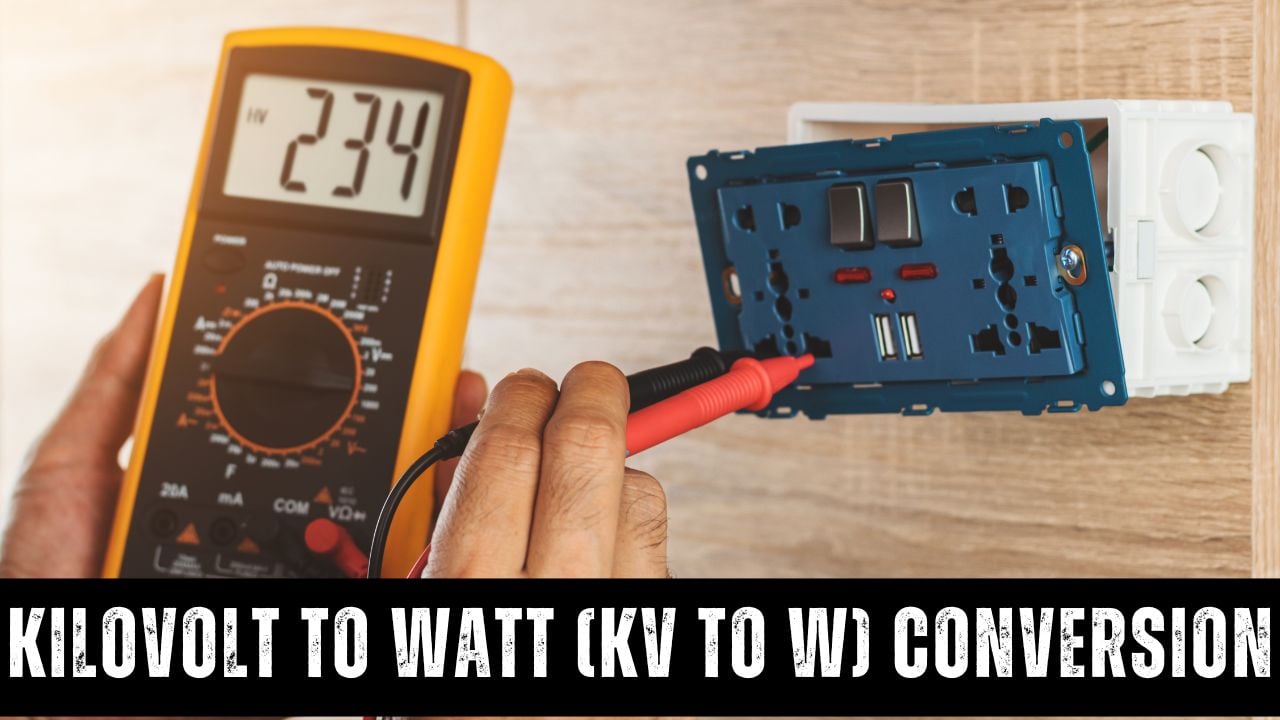Kilovolt to Watt Calculator
Convert kilovolts and current to power in watts.

Table of Contents
Kilovolt (KV) to Watt (W) Conversion
To convert kilovolts (kV) to watts (W), you need more information—voltage alone is not enough. You must also know:
The current (I) in amperes (A) The type of current: DC, AC Single Phase, or AC Three Phase The power factor (PF) for AC circuits (usually between 0.7–1)DC Systems
Formula: P = V × I
Power (W) = Voltage (V) × Current (A)
For kV to W: P = (kV × 1000) × I
AC Single Phase
Formula: P = V × I × PF
Power (W) = Voltage (V) × Current (A) × Power Factor
For kV to W: P = (kV × 1000) × I × PF
AC Three Phase Line-to-Line (L-L)
Formula: P = √3 × VL-L × I × PF
Power (W) = √3 × Line-to-Line Voltage (V) × Line Current (A) × Power Factor
For kV to W: P = √3 × (kV × 1000) × I × PF
AC Three Phase Line-to-Neutral (L-N)
Formula: P = 3 × VL-N × I × PF
Power (W) = 3 × Line-to-Neutral Voltage (V) × Line Current (A) × Power Factor
For kV to W: P = 3 × (kV × 1000) × I × PF
Where:
- P = Power in watts (W)
- V = Voltage in volts (V)
- kV = Kilovolts (1 kV = 1000 V)
- I = Current in amperes (A)
- PF = Power Factor (ranges from 0 to 1, typically 0.8 to 0.95 for most applications).
